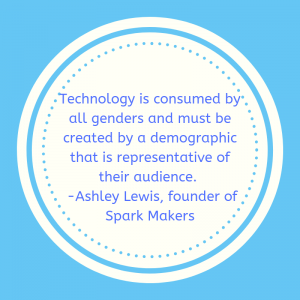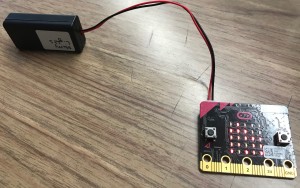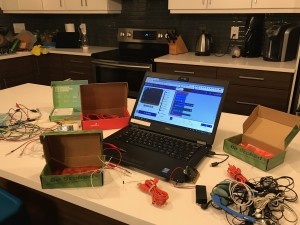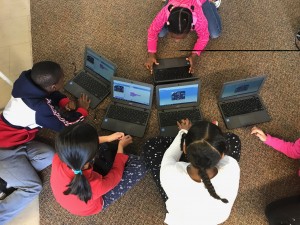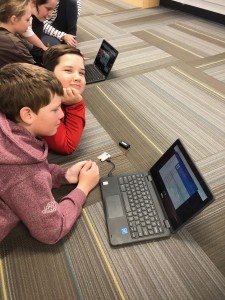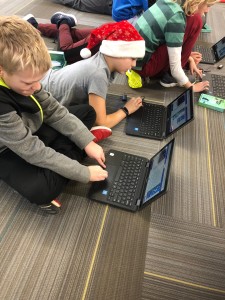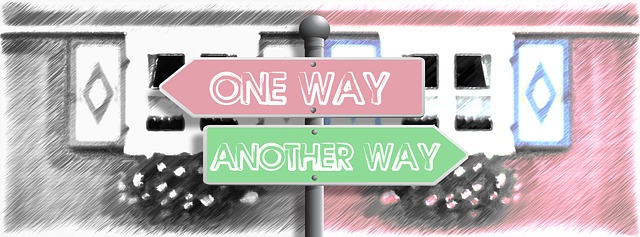As January and the new year approaches, I start to reflect on balance and keeping true to what I believe to be most important. When in the classroom, I always thought that it was a great time to press the reset button with students and gear up for the next half of the year. Over the break, I often take some time to check out resources that I think will help me along this goal so that I can add fresh ideas to lessons that I know have allowed students to reflect on themselves as they start to set goals. This year was no different even though I’m not in the classroom. While taking a look through some of the amazing ETFO resources available online, I found the Everyday Mental Health Classroom resource that I think is absolutely fantastic and essential for classrooms.
Co-developed over the past two years by School Mental Health ASSIST and ETFO, this resource is designed to provide K – 8 educators with evidence-based strategies to help develop the Social Emotional learning skills of students. The great part about this resource is that the activities contained have been tested by ETFO members and not only that, but a research project was done to determine the efficacy in classrooms. It’s definitely a resource that educators should consider using in their classrooms.
Here’s why! The resource:
- offers the evidence and need for this work in classrooms;
- honours the professional judgement of teachers;
- focuses on core skills;
- is online and easily accessible.
In this post, I’ll dig into why I think it’s a great resource for using in classrooms in the hopes that you’ll try it with students and if you already have, share what you’ve noticed with others.
Evidence-Based
When I think of a resource being evidence-based, I understand that it is informed objectively. In that there is a perceived need for the development of the resource and that there is time taken and reflection made to truly understand the impacts of what is being proposed as good pedagogy in the classroom.
The Everyday Mental Health Classroom resource offers a great deal of background on the rationale for the project and the findings. The resource honours and speaks to the fact that as educators, we are not expected to me experts in mental health and yet we have an important role in working with a diverse group of students. We do have the responsibility to create safe and caring classroom environments for all and for helping our students further develop the core skills that I’ll get into later. The idea is that the lessons and activities can be easily embedded into daily classroom practices with this goal in mind. Of educators who participated in the study, 84% found the resource extremely or very useful; while 95% would recommend the resource to other educators within and outside of their division and roles. The background page on the site offers a wealth of information on the benefits of Social Emotional Learning for students (1). I encourage your to take a look.
Honours Professional Judgement
In Understanding Your Professional Judgement, Professional Judgement is defined as, “judgement that is informed by professional knowledge of curriculum expectations, context, evidence of learning, methods of instruction and assessment and the criteria and standards that indicate success in student learning. In professional practice, judgement involves a purposeful and systematic thinking process that evolves in terms of accuracy and insight with ongoing reflection and self-correction”. ETFO has provided support for teacher and occasional teacher members in exercising their professional judgement.
One thing that makes this resource unique is that right on the landing page, there is mention of the importance of professional judgement. The site further encourages educators to consider their students and exercise professional judgement to maximize growth in students. It also states that, “Using professional judgement, educators can select from a variety of practices within the Everyday Mental Health Classroom Resource to enhance classroom conditions and build social emotional skills in ways that best meet the needs of their students”.
This is so empowering! While I may not be an expert in mental health, knowing that I can use my professional judgement to select and embed activities that will develop core skills that can potentially have a positive impact on students mental health and wellbeing is amazing. Sometimes hearing this is just the thing that a teacher needs to gain that confidence in trying something new.
Focuses On Core Skills
This resource focuses on developing 6 core skills:
Stress Management and Coping Skills
Everyday, we face challenges. How we manage these challenges and stresses is key to our success. Different people use different strategies in stress management. This section contains activities that helps students to develop skills and build their own toolboxes with strategies that work best for them.
Emotion Identification Skills
I’ve heard that there is power in naming emotions. We all face a variety of different emotions throughout the day. This section contains activities that help students to identify and appropriately express their feelings, further developing their ability to effectively self-regulate.
Positive Motivation Skills
This section reminds me of the importance of Growth Mindset. This section contains activities that help students in the areas of expressing gratitude, practicing optimising and perseverance, as well as reframing.
Relationship Skills
Positive relationships are important to have and are essential for a safe and caring classroom environment. This section contains activities that focus on acts of kindness, being a good friend, respect, conflict resolution, empathy and listening.
Self Confidence and Identity Skills
We all have qualities that make us unique. Understanding our identities and who we are is an important part of building our own self-confidence. This section contains activities that will help students to learn about and appreciate their identities while empowering them to hold firm to their beliefs when faced with challenging decisions.
Executive Functioning Skills
When we think of executive functioning skills, I think of the skills needed to plan, organize and complete tasks. This section contains activities that help students develop and master these skills through repeated opportunities for practice.
Online and Easily Accessible
This free resource is available online with challenge cards that can be printed for easy access while the activity is in progress. Each activity provides the teacher with information on the purpose and the time required so that they can best determine which might be best to embed into their day. The filter allows for teachers to search by division and also has a great feature that allows for Occasional Teachers to be able to search for activities that they can also use during their time with students. I think this is fantastic!
I know that this post just gives you a taste of this resource and I hope that you take some time to take a deeper look into it and consider using it in your classrooms. By developing these skills in students, we can prepare them to succeed beyond the classroom. The evidence is there, what are you waiting for?
1. https://drive.google.com/file/d/11gM59_aU_enXWpED03URIPUpS0iLjxI1/view

